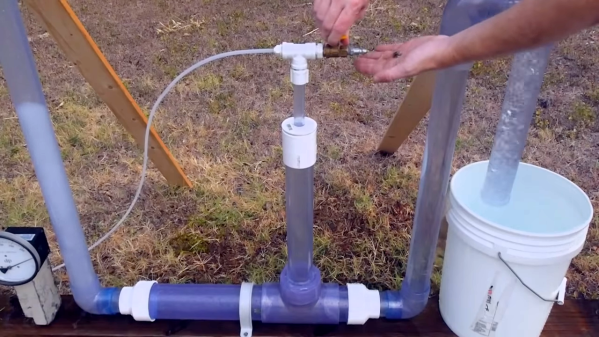If you’re like us, understanding the processes and methods of the early Industrial Revolution involved some hand waving. Take the blast furnace, which relies on a steady supply of compressed air to stoke the fire and supply the oxygen needed to smelt iron from ore. How exactly was air compressed before electricity? We assumed it would have been from a set of bellows powered by a water wheel, and of course that method was used, but it turns out there’s another way to get compressed air from water: the trompe.
As [Grady] from Practical Engineering explains in the short video below, the trompe was a clever device used to create a steady supply of high-pressure compressed air. To demonstrate the process, he breaks out his seemingly inexhaustible supply of clear acrylic piping to build a small trompe. The idea is to use water falling around a series of tubes to create a partial vacuum and entrain air bubbles. The bubbles are pulled down a vertical tube by the turbulence of the water, and then enter a horizontal section where the flow evens out. The bubbles rise to the top of the horizontal tube where they are tapped off by another vertical tube, as the degassed water continues into a second vertical section, the height of which determines the pressure of the stored air. It’s ingenious, requiring no power and no moving parts, and scales up well – [Grady] relates a story about one trompe that provided compressed air commercially for mines in Canada.
Need an electricity-free way to pump water instead of air? Check out this hydraulic ram pump that takes its power from the water it pumps.
Continue reading “Get Compressed Air From Falling Water With The Trompe”











